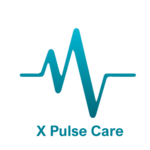Smart Radiology using Artificial Intelligence
The Opportunity
With approximately 2 billion procedures per year, chest x-rays are the most common and the most effective image examination tool. X-Rays provide critical illness screening diagnosis and management of diseases including pneumonia. However, an estimated two-thirds of the global population lack access to x-ray diagnosis.
There is a need to help Doctors with Decision Support to reduce interpretation errors and reduce reporting delays, and backlogs.
What we Did
- Extract high-level features and generates anomaly score and detect anomaly image.
- Present visual representation of the distinct regions in x-ray images.
- Calculates the number of weights of each feature map layer.
- The severity score estimator summarizes all values for each segment and normalizes them.
- AI-Generated radiology reports assist Radiologists in writing diagnoses.
The Results
XPulse has 4 different modules.
- Algorithms can detect the present and the future probable severity.
- Can detect up to 14 different diseases.
- Algorithms help radiologists quickly identify regions of interest without relying on subjective analysis methods.
- We have utilized a novel supervised deep learning-based approach in tandem with sentence-level LSTM-based text-autoencoder towards learning the embedding spaces to generate clinical analysis reports from the x-rays, substantially reducing the radiological diagnosis pipeline.
96.4
%
Detection Accuracy
89
%
Severity Score Accuracy
0.7
Report Generation Bleu Score
How we did it
In the opening phase of the project, the priority was to explore and understand the available data, and to collaborate with stakeholders to design a system that would produce useful actionable insights.
The outbreak of COVID-19 prompted a big push in research. We wanted to use our engineering expertise to support response and collaborated with research institutes to understand the areas.
We worked on every four modules individually. Which are as follows;
- Detection
- Heatmaps
- Severity
- Reporting
Common practices we used was transfer learning. Using an optimized convolutional neural network that extracts the features from a chest X-ray image.
Started with extracting high-level features as a backbone. Added classification head and then anomaly detection head.
For reporting module, we used a self-compiled dataset of x-rays and radiologists’ comments.
Quick Links
Contact Us
Contact us without wasting more time for improved digital accessibility. Questions? Email us at info@bondwest.co.uk

